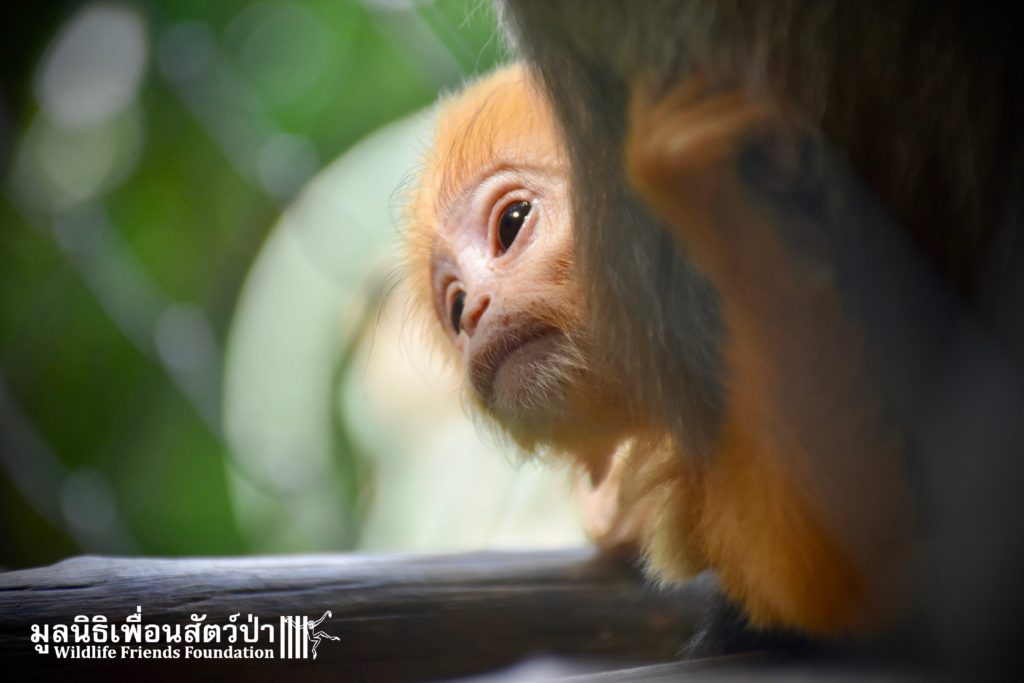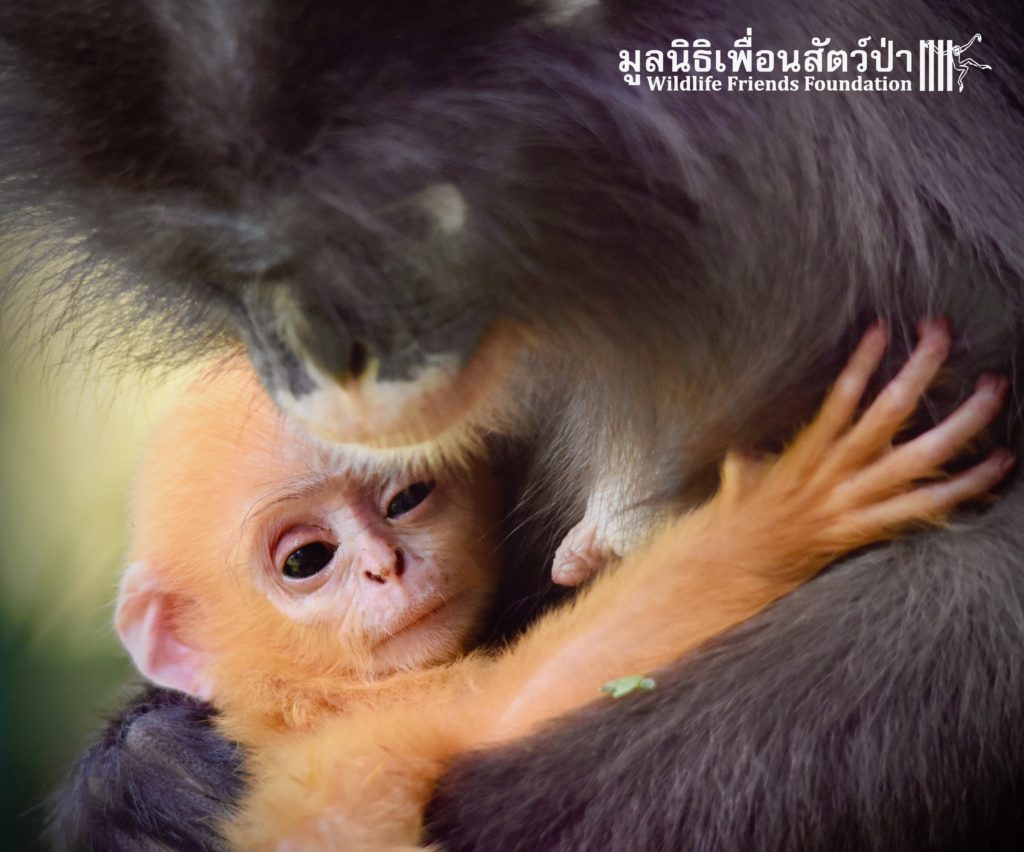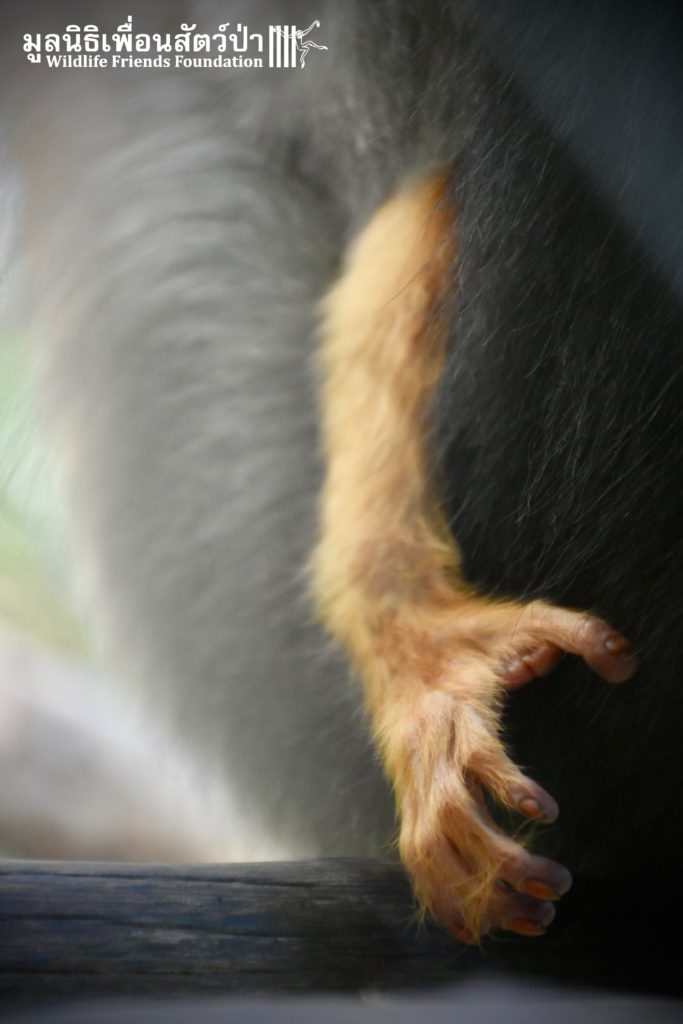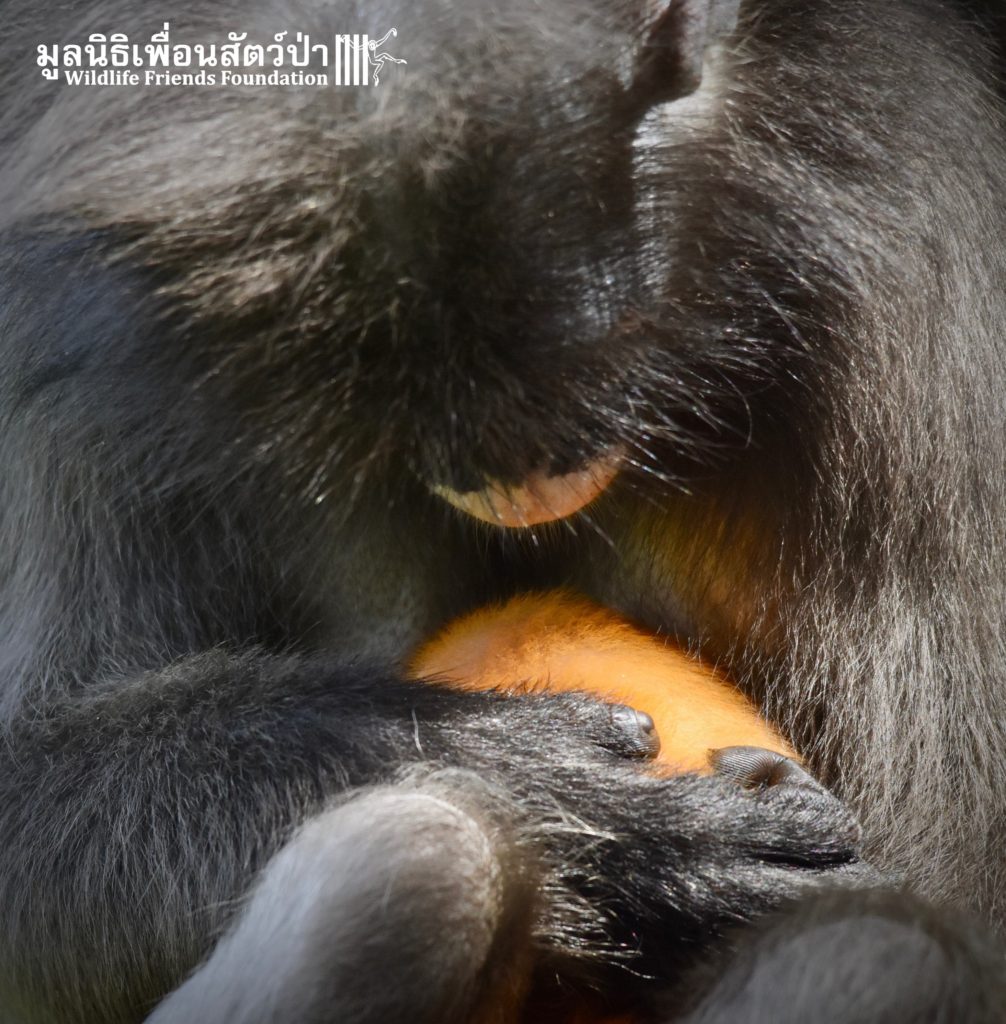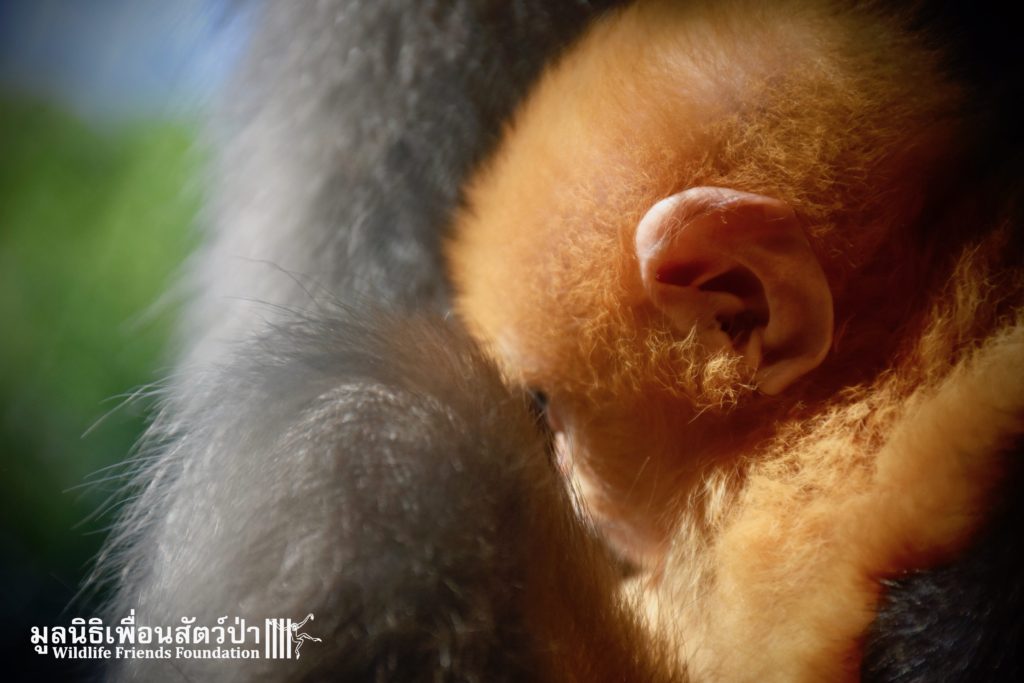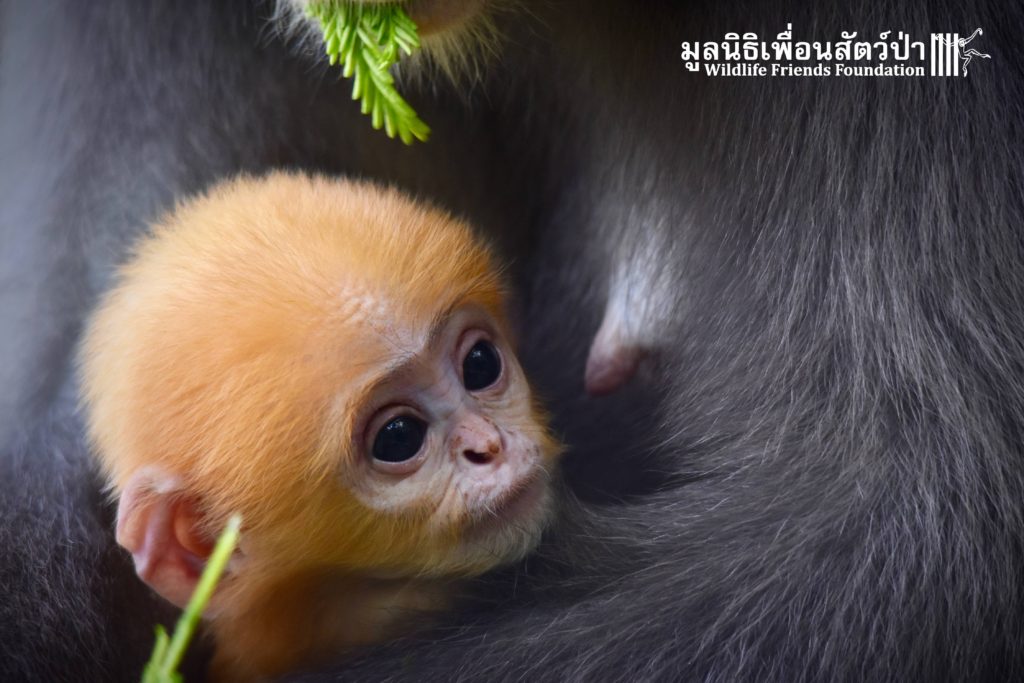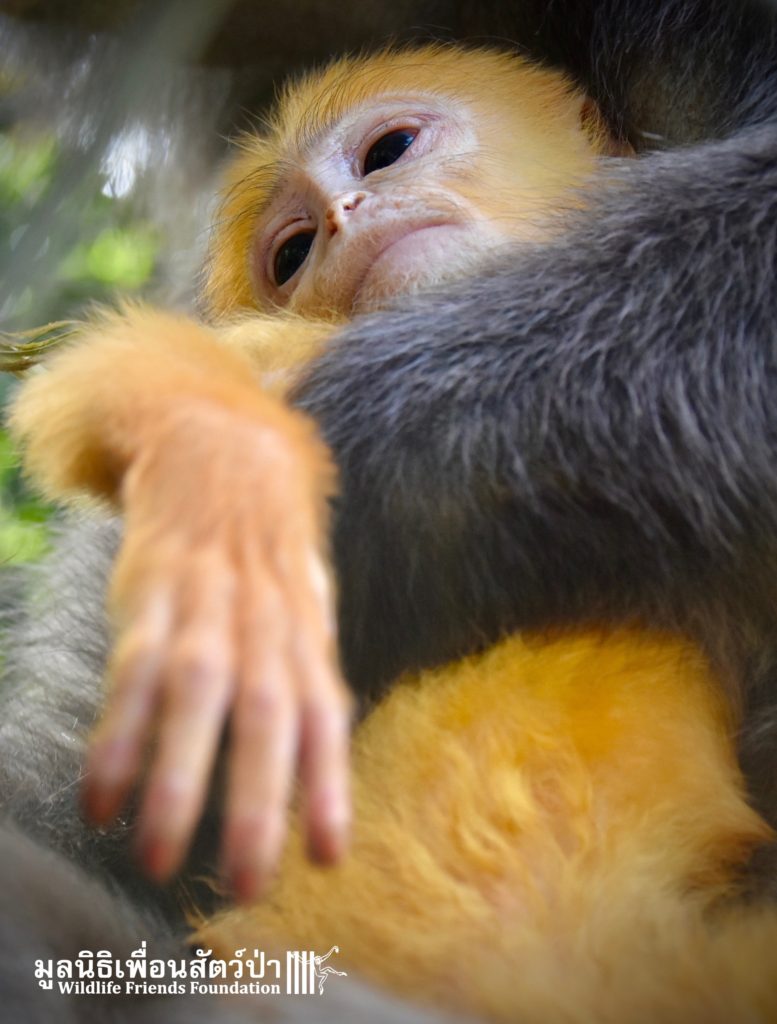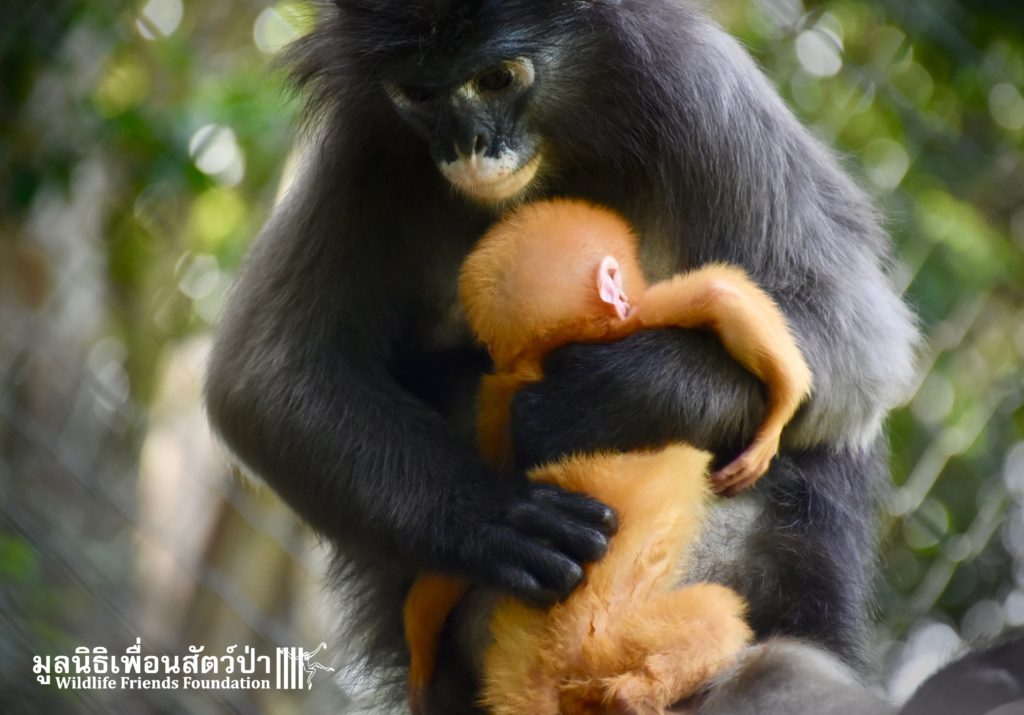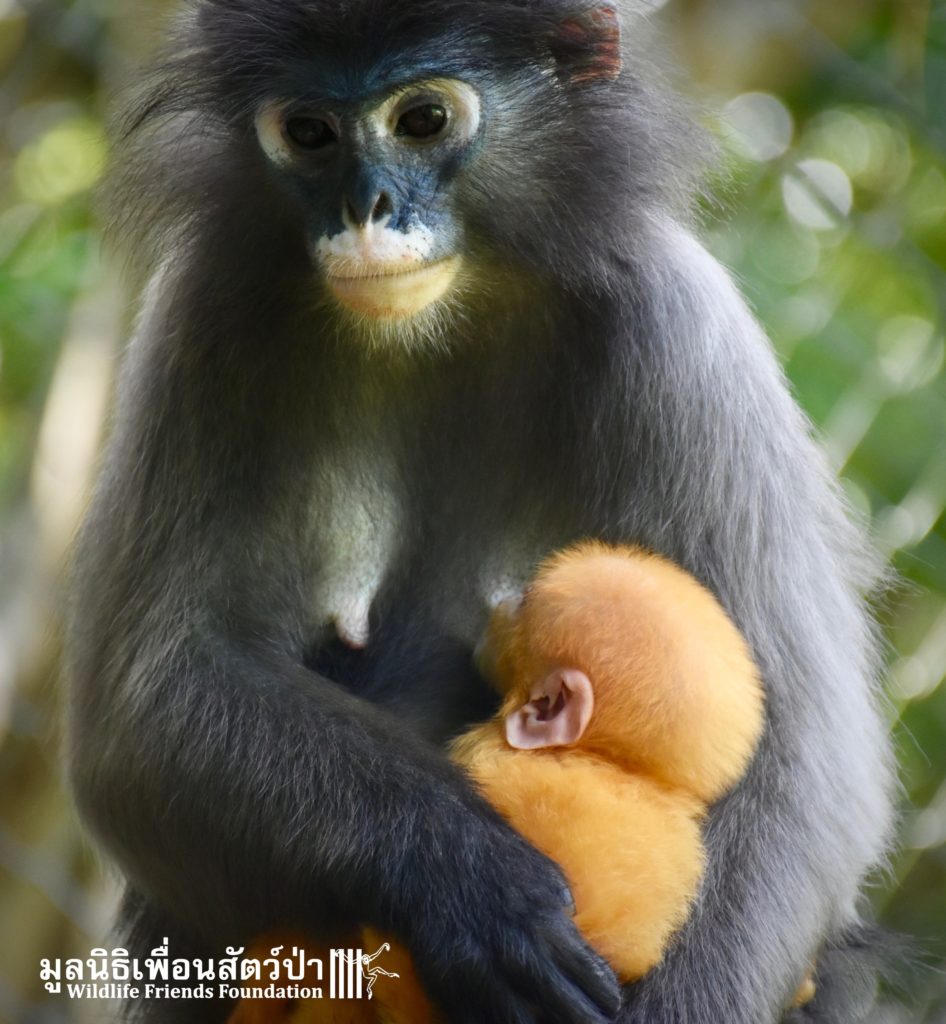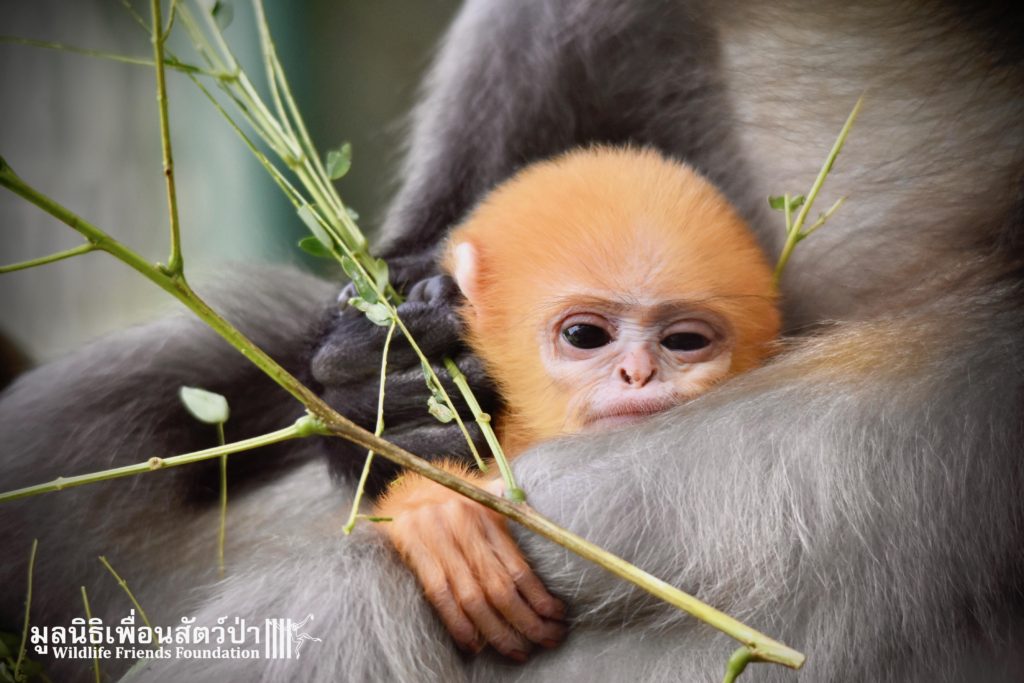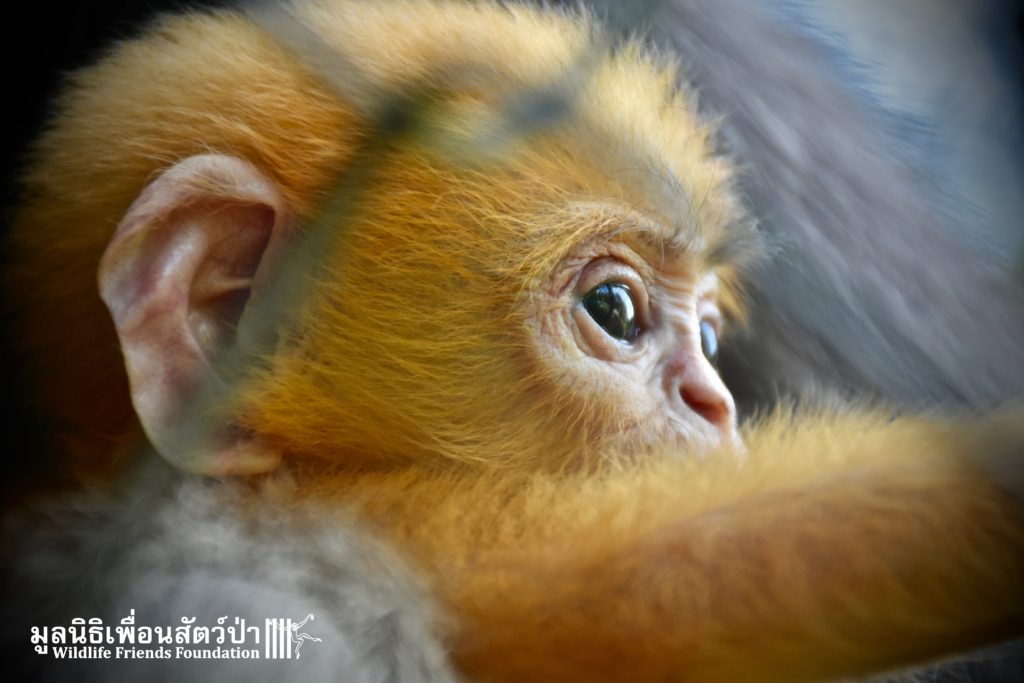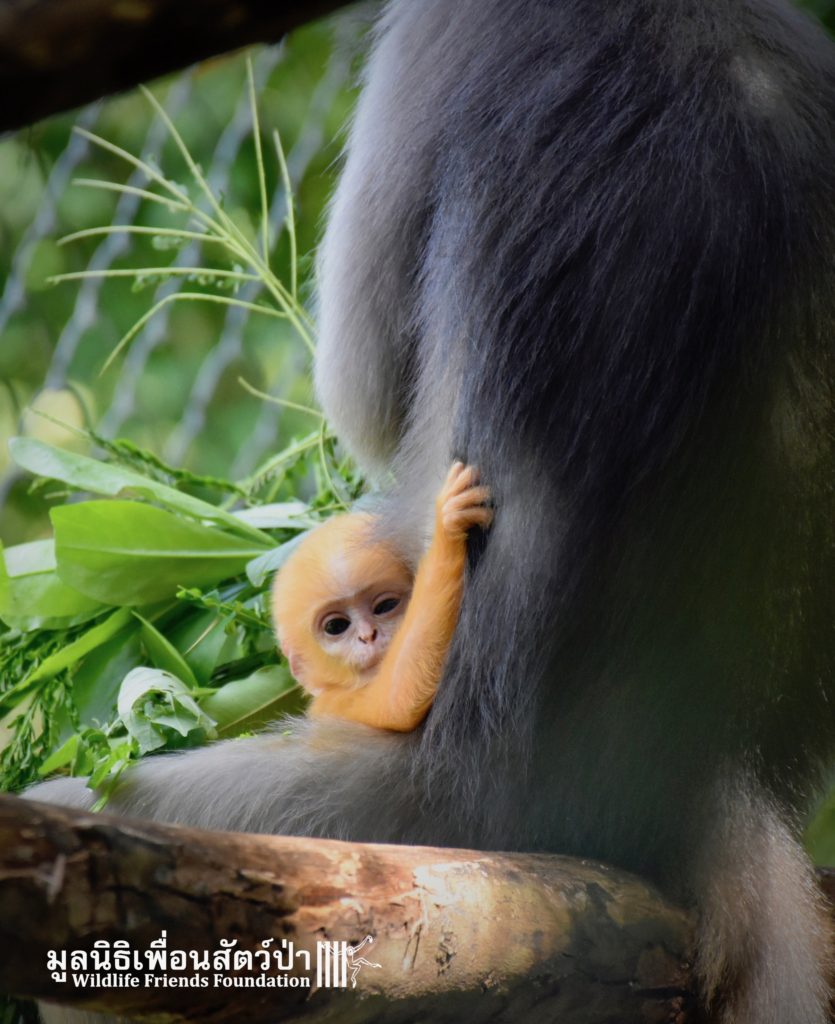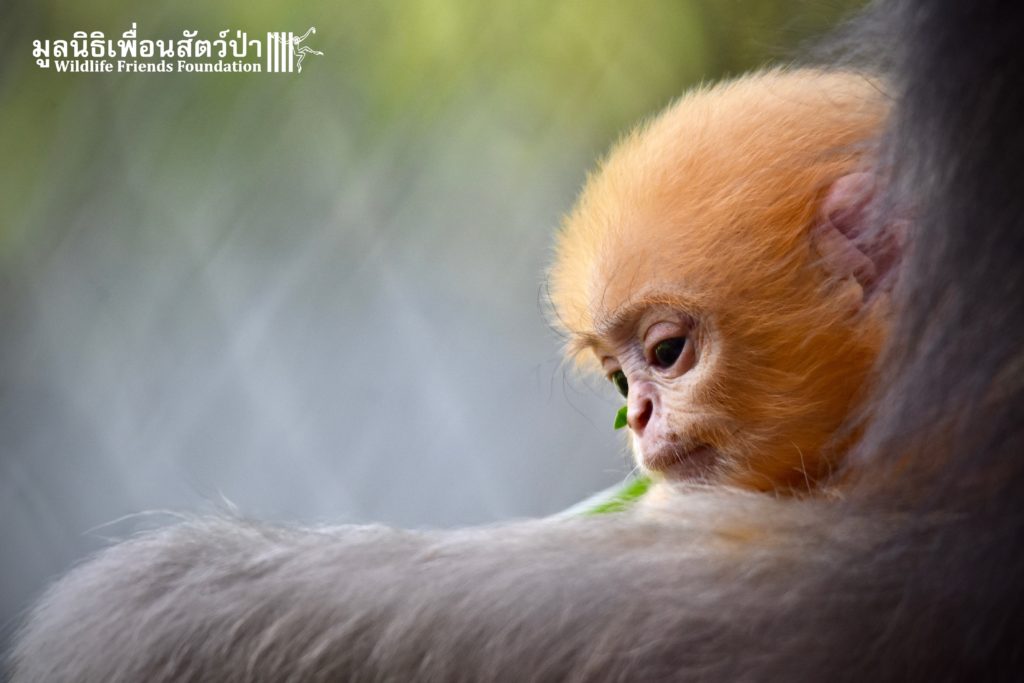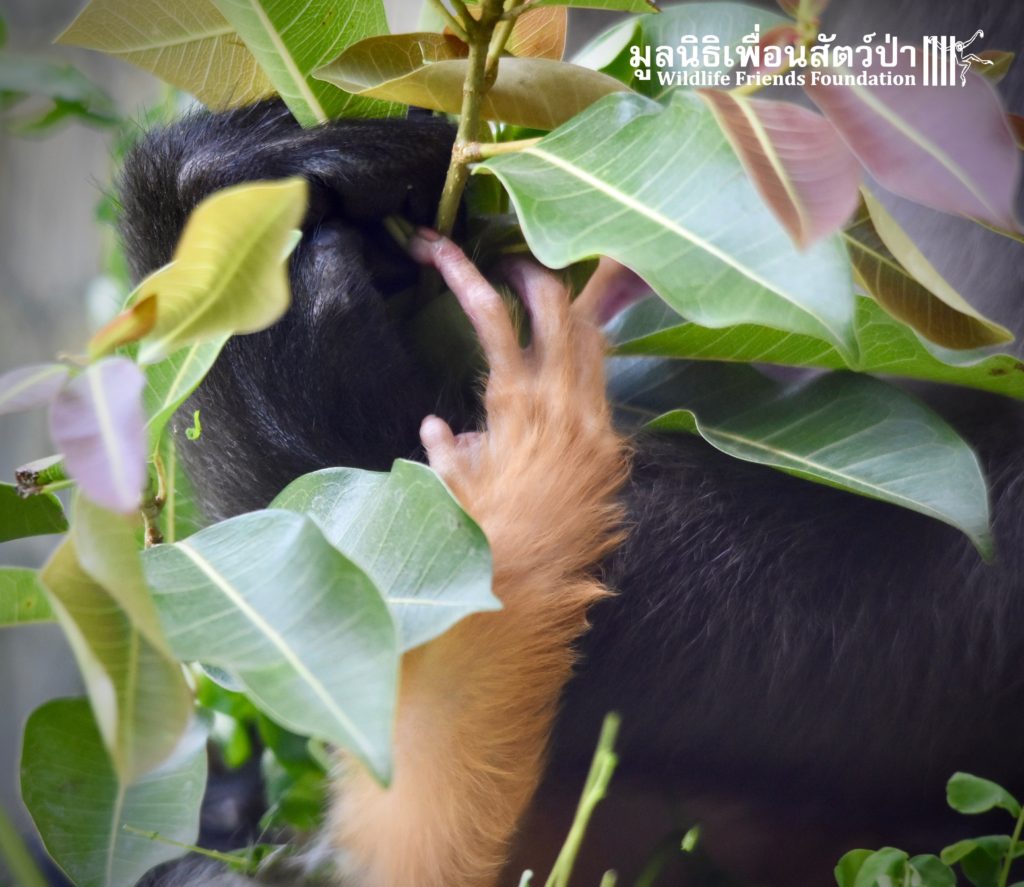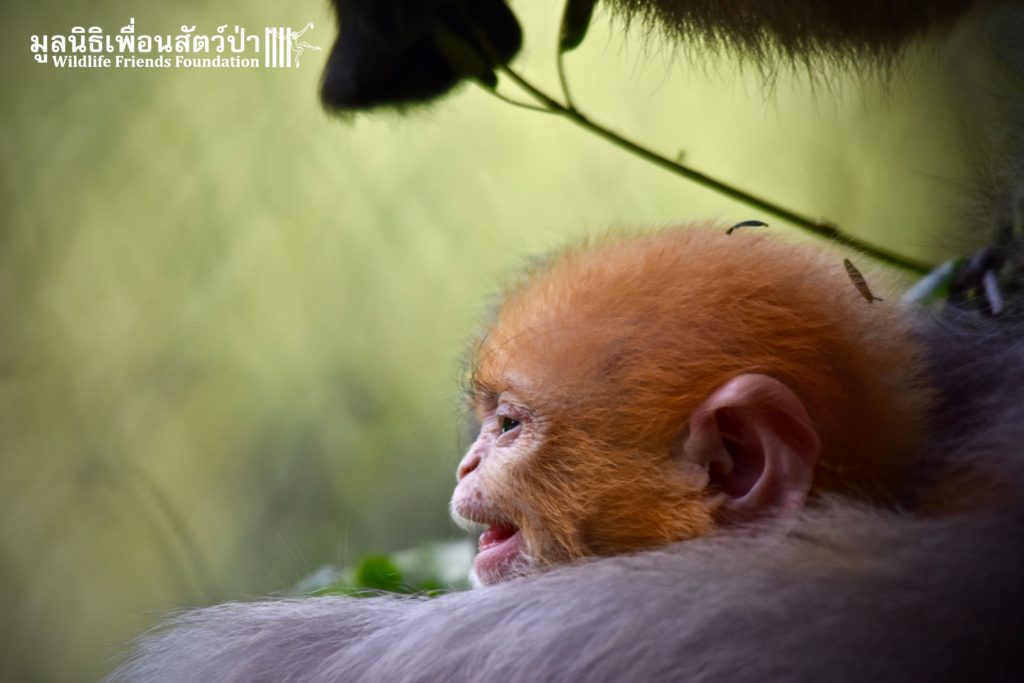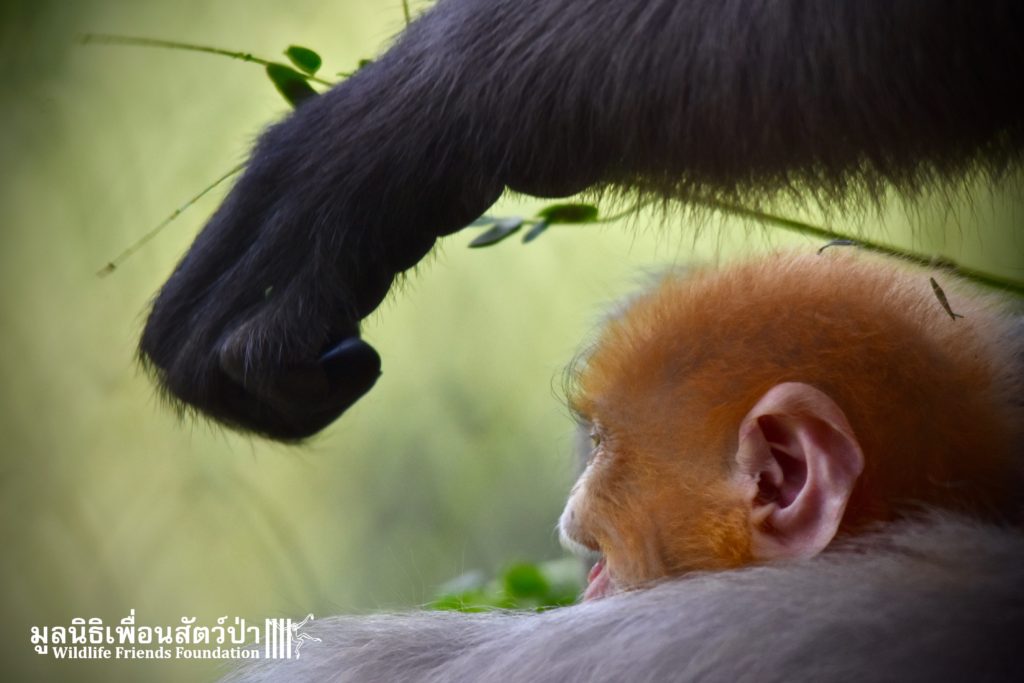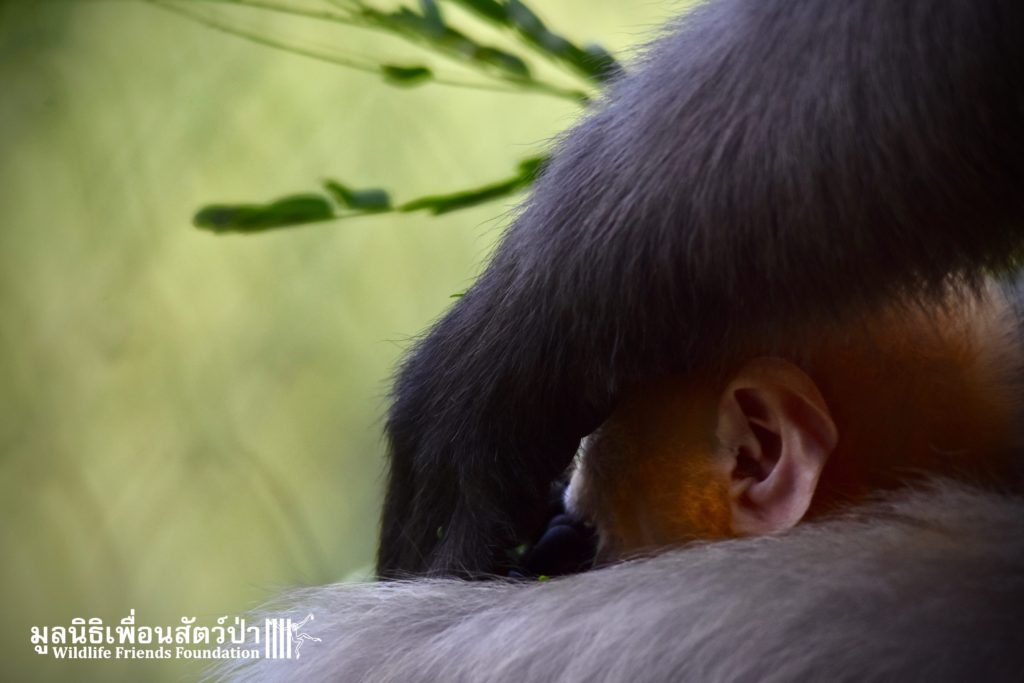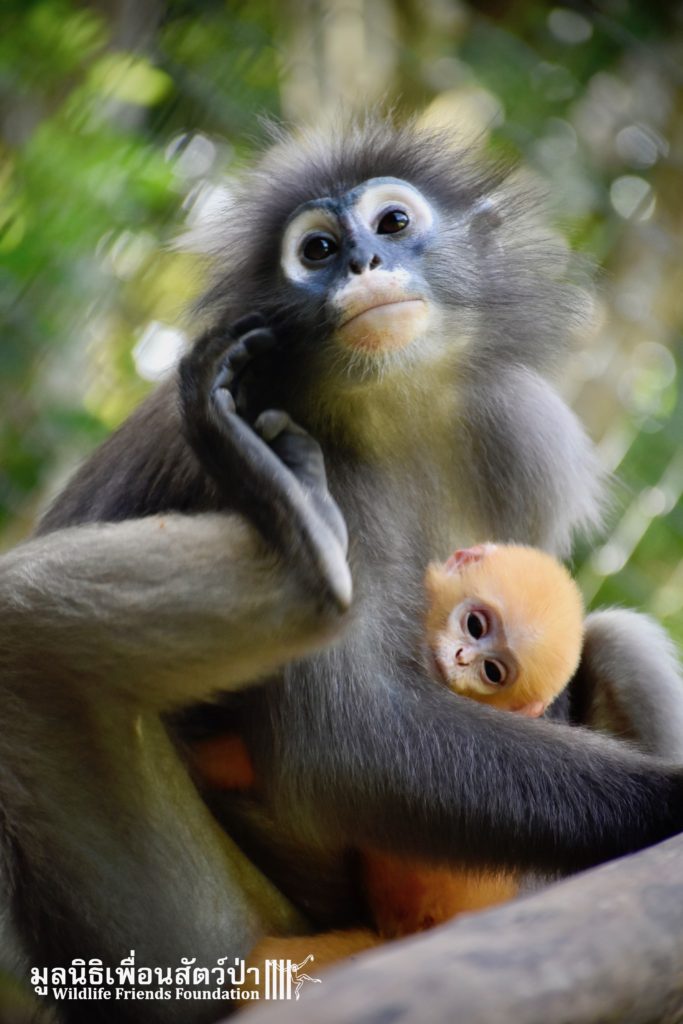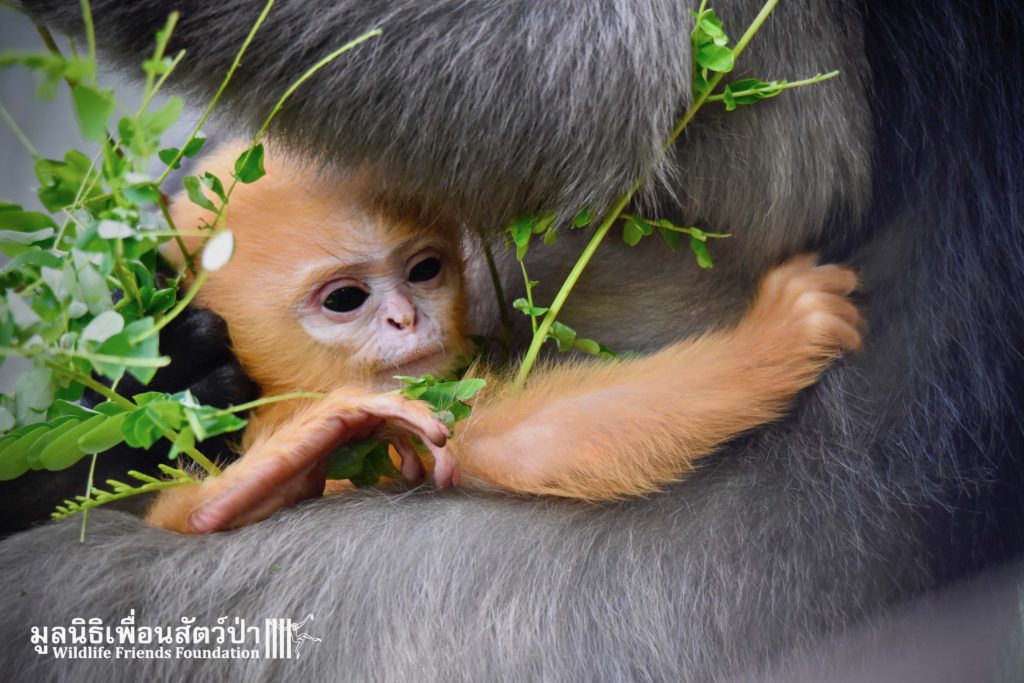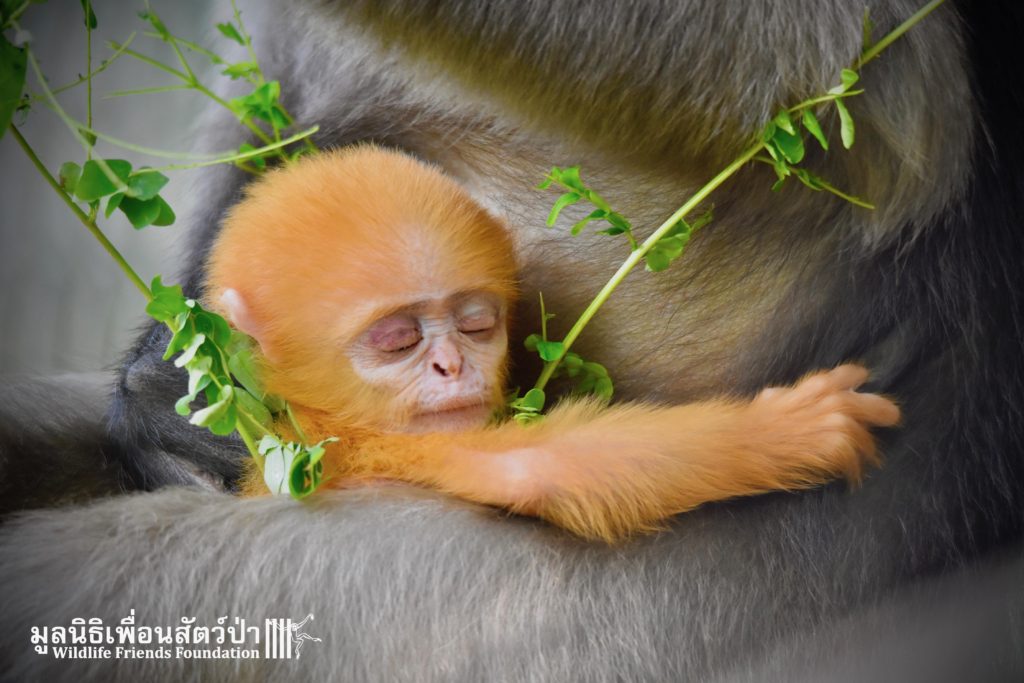WFFT's first-ever sugar glider: discover the devastating impact the wildlife trade is having on these incredible creatures
Say hello to Peach!!!
WFFT does not encourage or promote the unnecessary breeding of captive wildlife however accidents sometimes happen. And here is Peach (his mothers name is Lukwa, Plum in Thai), a baby dusky langur who first see the light of the day just last week. He is doing good with his mom Lukwa. They have been isolated for more privacy so the mother and baby have time to bond.
Watching an animal rear its young is a not usual site for all here at WFFT, just to reiterate we do not promote the unnecessary breeding of captive wildlife, but to see Lukwa being a devoted mother, doing a great job caring for her baby is somewhat special.
As you can see, infant langurs have bright orange coat. Apparently this coloration helps the other troop members know easily when a baby born. Indeed, when there is a birth in langur troop, it is the female troop members who take care of the infants, a practice called allomothering. And it also appears that because infant langurs love to explore, this color makes it easier and faster for the mothers to find their babies. Another theory suggests that because many animals are color-blind, this bright orange is a good protection for the babies because the green and orange appears the same for most of predators, so a better camouflage.
However, it is amazing to see what nature gives to those little monsters more chances to reach, safely, adult age.
So, let’s welcome Peach to this world!

